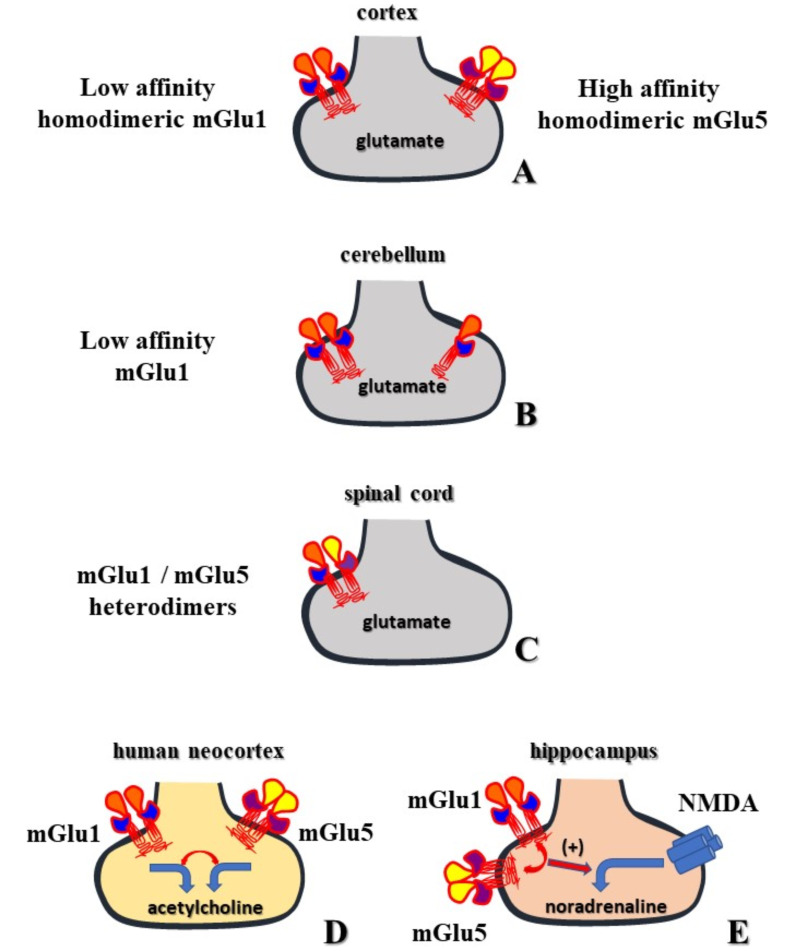Fig. (2).
The contribution of the group I mGlu receptors to the presynaptic control of transmitter release from synaptosomes. A. mGlu1 and mGlu5 homodimeric receptors colocalize in mouse cortical glutamatergic nerve endings, but respond differently to the orthosteric agonists, representing respectively the low and the high affinity receptors. The two receptors do not modify the spontaneous release of glutamate but potentiate the depolarization-evoked glutamate exocytosis. B. mGlu1 receptors are present in cerebellar glutamatergic nerve endings, but the data so far available does not allow to predict whether the receptors exist in monomeric or dimeric assembly. The mGlu1 receptor does not affect the spontaneous release of glutamate but reinforces the depolarization-evoked glutamate exocytosis. C. mGlu1 and mGlu5 autoreceptors exist and colocalize in spinal cord synaptosomes, where they functionally associate to release glutamate. The two receptors increase the spontaneous release of glutamate. D. mGlu1/ mGlu5 containing receptors exist in human cortical cholinergic terminals where their activation elicits the release of acetylcholine. The two receptors compensate one each other, since the blockade of the 3,5-DHPG-evoked releasing activity is achieved only when the mGlu1 and the mGlu5 receptor antagonists are concomitantly added. The very low percentage of the cholinergic synaptosomes did not allow to perform immunocytochemical analysis to investigate the receptor protein assembly but the functional results seems best interpreted by assuming the colocalization of mGlu1 and mGlu5 homodimeric receptors. E. mGlu1 and mGlu5 receptors also exist in hippocampal noradrenergic terminals and cooperate in an exclusive manner. The receptors do not modify on their own the spontaneous release of the amine but potentiate the NMDA-mediated releasing activity. We propose that homodimeric mGlu1 and mGlu5 heteroreceptors colocalize in these terminals to modulate the releasing activity elicited by the activation of colocalized NMDA receptors. (A higher resolution / colour version of this figure is available in the electronic copy of the article).

